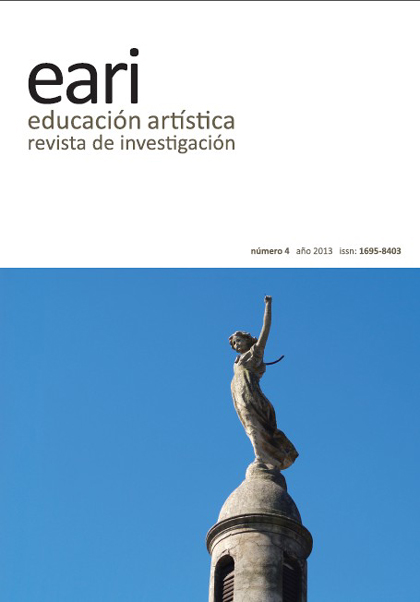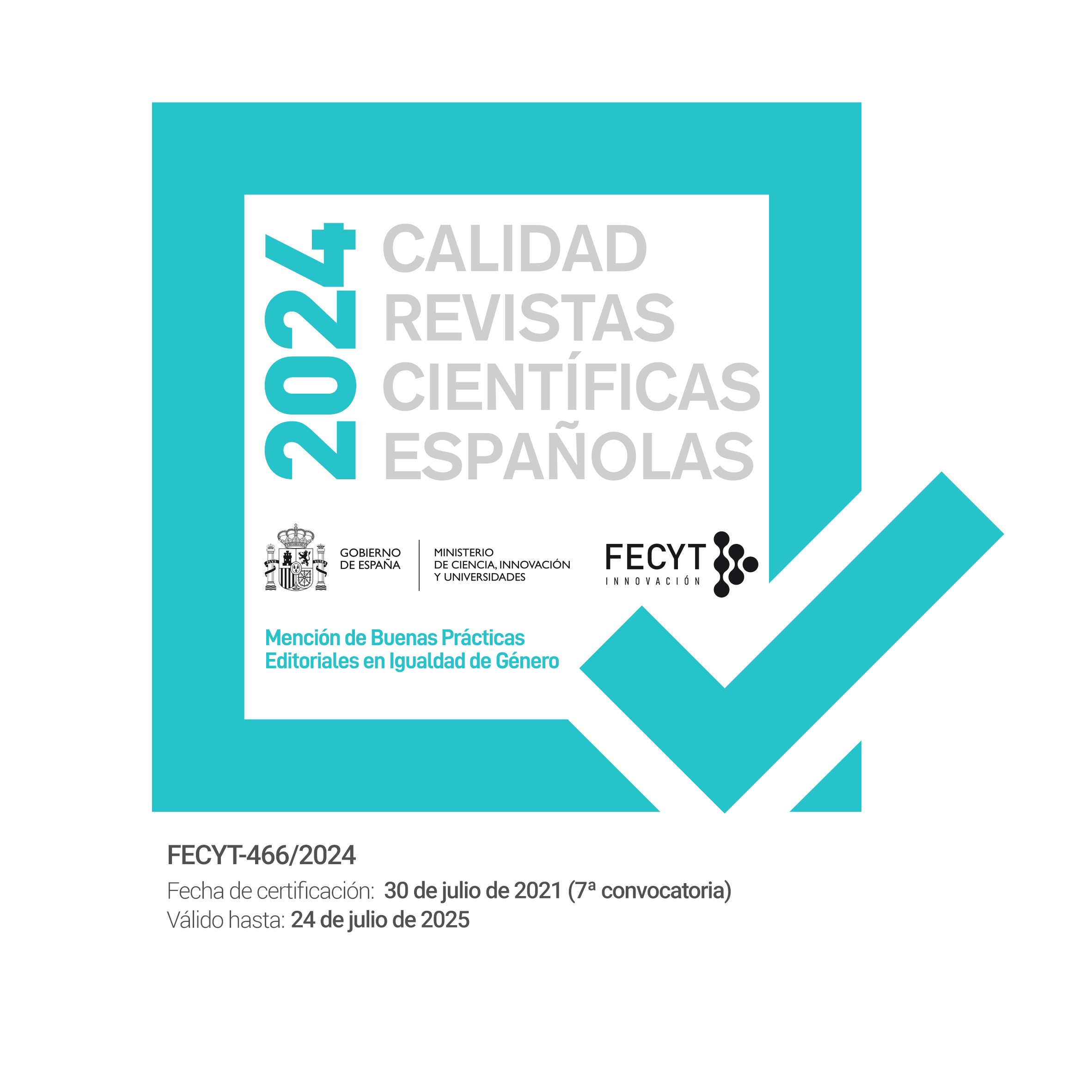Formación de maestros en educación artística y formación artística de maestros. Los patrimonios migratorios en la enseñanza obligatoria
DOI:
https://doi.org/10.7203/eari.4.2678 Abstract
Abstract
Resumen
Las directrices de la Agenda de Seúl (2010), establecida por la UNESCO en la II Conferencia Mundial sobre Educación Artística, señalan la importancia de la educación artística en tres aspectos: el pensamiento creativo, la salvaguarda del patrimonio cultural y el desarrollo de la responsabilidad social y medioambiental.
Así emerge un nuevo concepto para la educación artística en el que su significado se adquiere y conforma de acuerdo a su relevancia para la creatividad, el patrimonio y la sociedad. Este concepto migratorio adquiere un significado propio y se materializa en la escuela, requiriendo así un replanteamiento de la formación inicial y continua de maestros, profesores de arte y artistas.
El artículo ahonda en este significado a partir de las orientaciones de la UNESCO en sus Conferencias sobre Educación Artística y en su repercusión en la formación de maestros y en la definición de competencias específicas.
Mediante la puesta en marcha de un Proyecto de Innovación Docente para alumnos de Magisterio y Pedagogía se pretende actualizar estas consideraciones. El proyecto se dirige a desarrollar las competencias de los futuros docentes y a destacar el papel de la educación artística para la creatividad, el patrimonio y la sociedad.
La educación artística deviene así un patrimonio migratorio de toda sociedad, ampliando un enfoque centrado únicamente en la artisticidad de los alumnos.
Palabras clave: educación artística y creatividad, educación patrimonial, arte y sociedad, formación de maestros.
Abstract
At the Second World Conference about Art Education, UNESCO established The Agenda of Seul (2010), which pointed out three main goals for art education: creative thinking, heritage preservation and development of social values and citizenship. According to this, Art Education is raising as a migrant concept which acquires its own meaning linked to creativity, heritage and society, demanding thus a new approach for teachers, art teachers and artists.
From these considerations the article goes into the meaning of Art Education and the skills demanded in teacher training.
The implementation of an innovative project for teacher training leads Art Education considerations into practice by developing skills for future teachers and stands out the role of Art Education in creativity, heritage and society.
In conclusion, Art Education is seen as a migrant heritage that belongs to the whole society itself, widening from a concept focused only in artistic skills.
Keywords: Art Education and Creativity, Cultural Heritage Preservation, Arts and Society, Initial Teacher Training.
 Downloads
Downloads
Downloads
Published
How to Cite
-
Abstract1556
-
PDF (Español)669
Issue
Section
License
![]()
Educación artística: revista de investigación (EARI) retains the proprietary rights (copyright) of published works, and favors and allows the reuse of the same under the license Creative Commons Attribution-Noncommercial Use 4.0 International License (CC-BY-NC 4.0), which allows third parties to use the published material whenever the authorship of the work and the source of publication is mentioned (journal, publisher and URL of the work), and it is used for non-commercial purposes.
Authors are encouraged to disseminate their work after it has been published, through the internet (for example, in institutional archives online or on its website) which can generate interesting exchanges and increase work appointments.








